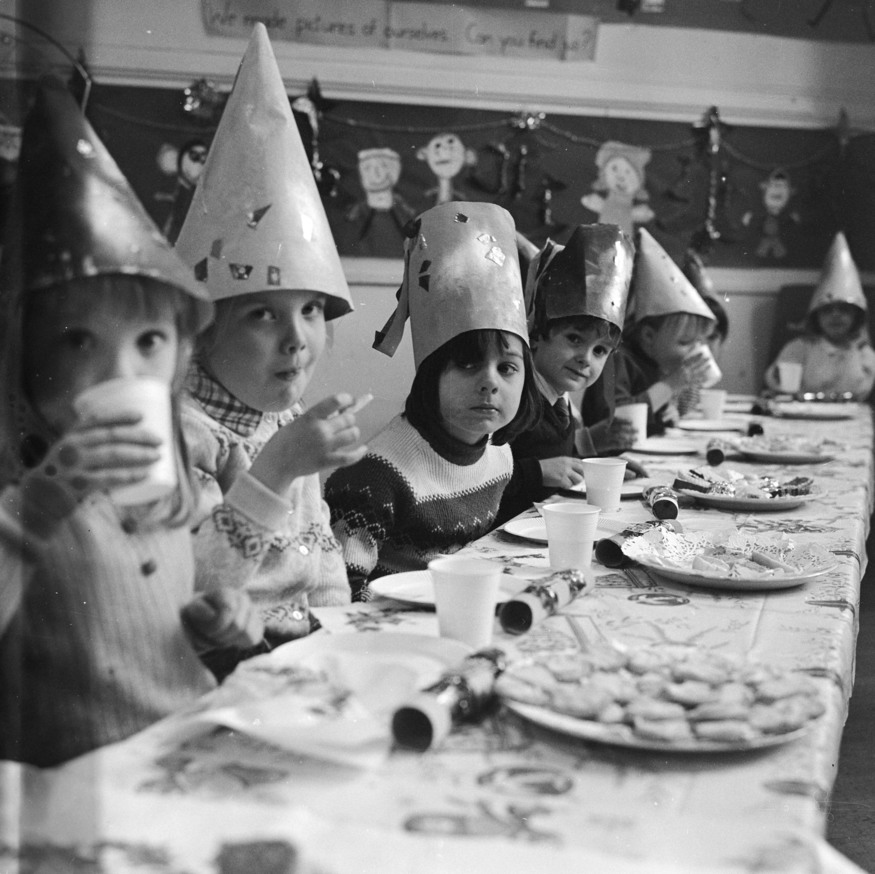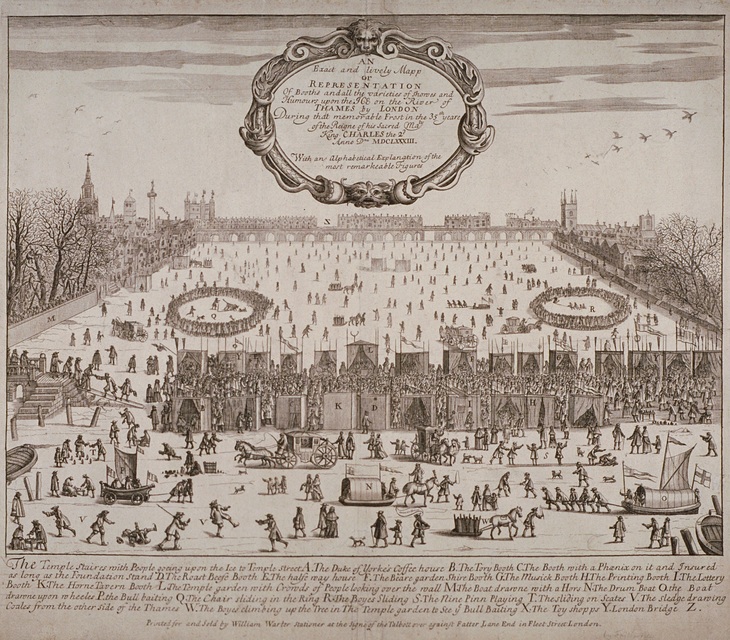This is a sponsored article on behalf of the City of London Corporation and Mayor of London.

You might not be able to soak up the capital's cultural scene in the way you'd imagined this Christmas, but there's still a whole world of festive fun for London lovers to discover... if you know where to look.
We've teamed up with the Mayor of London and the City of London Corporation to celebrate and support London's creative and cultural sectors this festive season. To kick things off, we've dug up some tantalising trivia about yuletide in London — with a little help from City of London Guides.
Read on to discover such gems as the origin story of the Christmas cracker and a properly old-school mince pie recipe (if you've got the stomach for it). And don't forget to follow @LDN_Culture on Twitter with #LondonTogether and #OurCityTogether for a daily advent calendar unveil at 10am to celebrate and support London's culture and creative businesses during these challenging times
1. The Christmas cracker was invented here...

The birthplace of the Christmas cracker? A confectionary shop on Goswell Road in the 1840s. Inspired by the sweets with tied ends he'd seen in Paris, its proprietor Tom Smith came up with a similarly cylindrical box of surprises, including love mottos, novelty gifts and — natch — jokes. Smith's invention was a big hit, and his sons pivoted to full-time cracker production from a factory near Finsbury Square.
2. ...And so was the first commercial Christmas card
We have the first-ever director of the Victoria & Albert Museum to thank for the advent of the Christmas card. In 1843, Sir Harry Cole was looking for a solution to the unanswered correspondence that piled up in his busy household during the festive season.
He commissioned a friend to draw a suitably merry illustration and had one thousand copies printed, to be sold at a shilling each. This was very pricey for the time and Cole's card flopped. However, as the 19th century wore on and Christmas became ever-more commercialised, more and more festive greetings cards began to find their way onto the market.
3. London was once home to a proper panto legend

Fun fact: Dick Whittington was real, and he lived right here in the City of London. Richard Whittington and his wife Alice resided next door to St Michael Paternoster church in the City during the late medieval period.
Like the character he inspired, Whittington was a wealthy merchant who became Lord Mayor of London. Unlike his pantomime counterpart, he most certainly did not come from humble beginnings, and there's no evidence that he owned a cat, let alone one that became such a cash cow.
4. Cow tongue mince pies were all the rage

Up for putting a vintage twist on your Christmas baking? Check out the above mince pie recipe from Guildhall Library's Food and Wine Collection, which dates back to 1740. Its ingredients include sweet spices and, erm, calves' tongues.
5. Londoners used to party on the frozen River Thames

The River Thames turned to ice at least 23 times between 1309 and 1814. Never able to resist a good pop up, Londoners took the opportunity to hold 'frost fairs' on the frozen river — you might have read about these when we covered them a couple of years ago One of these took place during the winter of 1683 when the Thames froze over for more than six weeks. The City of London Guides tells us that it stretched from Temple to London Bridge and featured food stalls, shops and even horse races.
6. You can dine in the same tavern where Scrooge ate his Christmas Eve meal

The City of London is the backdrop to one of the world's most popular festive tales — Charles Dickens' A Christmas Carol. But did you know that you can still dine in the 'melancholy tavern' where Dickens depicts Scrooge eating his Christmas Eve meal? It's thought to be the George & Vulture at Castle Court, and an inn has stood on this site since 1142. It's now a Samuel Smith's pub.
7. The City of London was once an epicentre of gingerbread production

Gingerbread men were all the rage in Elizabethan London, with the Queen's court even boasting a royal gingerbread maker. But the centre of production for the confection — the City of London Guides tell us —was Gingerbread Court in Bishopsgate, which Liverpool Street Station now stands on top of.
8. A freezing cold dip in The Serpentine is a time-honoured Christmas tradition
On Christmas morning, London's most masochistic swimmers participate in one of the capital's most toe-curling festive traditions: a 100-yard race across The Serpentine lake in Hyde Park. Members of Serpentine Swimming Club have taken part since 1864. After JM Barrie donated the winner's prize in 1904 — the same year Peter Pan debuted on the London stage — it became known as The Peter Pan Cup.
9. The Trafalgar Square tree is a gift from Norway

We have the Norwegian city of Oslo to thank for all the Christmas trees that have decorated Trafalgar Square since 1947. The spruce is a thank you gift in recognition of the help that Britain gave to Norway during the second world war. Hence why it's decorated the Norwegian way — with its lights hung vertically. At the time of writing, the tree is on its way to London. You can even follow its progress on Twitter, here.



